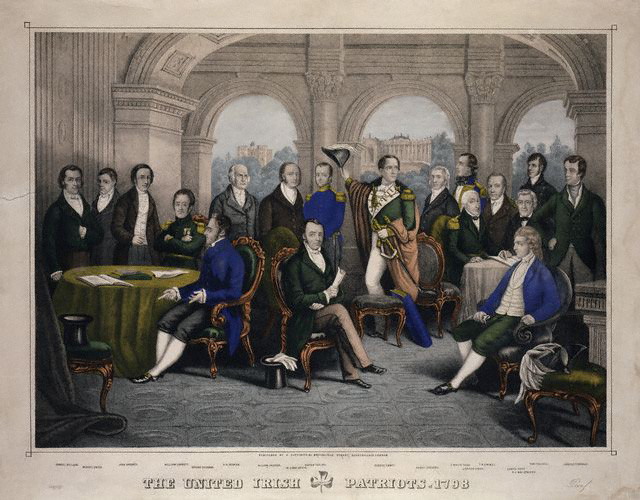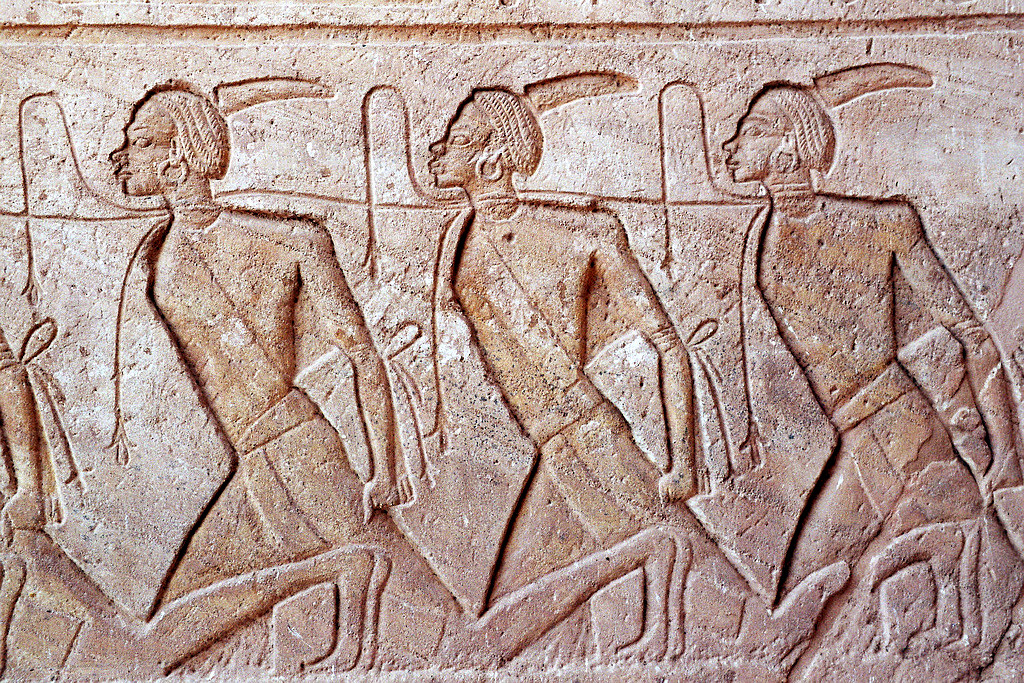|
French Expedition To Ireland (1796)
The French expedition to Ireland, known in French as the ''Expédition d'Irlande'' ("Expedition to Ireland"), was an unsuccessful attempt by the French Republic to assist the outlawed Society of United Irishmen, a popular rebel Irish republican group, in their planned rebellion against British rule during the French Revolutionary Wars. The French intended to land a large expeditionary force in Ireland during the winter of 1796–1797 which would join with the United Irishmen and drive the British out of Ireland. The French anticipated that this would be a major blow to British morale, prestige and military effectiveness, and was also intended to possibly be the first stage of an eventual invasion of Great Britain itself. To this end, the Directory gathered a force of approximately 15,000 soldiers at Brest under General Lazare Hoche during late 1796, in readiness for a major landing at Bantry Bay in December. The operation was launched during one of the stormiest winters of ... [...More Info...] [...Related Items...] OR: [Wikipedia] [Google] [Baidu] |
War Of The First Coalition
The War of the First Coalition () was a set of wars that several European powers fought between 1792 and 1797, initially against the Constitutional Cabinet of Louis XVI, constitutional Kingdom of France and then the French First Republic, French Republic that succeeded it. They were only loosely allied and fought without much apparent coordination or agreement; each power had its eye on a different part of France it wanted to appropriate after a French defeat, which never occurred. Shusterman, Noah (2015). ''De Franse Revolutie (The French Revolution)''. Veen Media, Amsterdam. (Translation of: ''The French Revolution. Faith, Desire, and Politics''. Routledge, London/New York, 2014.) Chapter 7, pp. 271–312: The federalist revolts, the Vendée and the beginning of the Terror (summer–fall 1793). Relations between the French revolutionaries and neighbouring monarchies had deteriorated following the Declaration of Pillnitz in August 1791. Eight months later, Louis XVI and the Leg ... [...More Info...] [...Related Items...] OR: [Wikipedia] [Google] [Baidu] |
Amphibious Landings
Amphibious warfare is a type of Offensive (military), offensive military operation that today uses naval ships to project ground and air power onto a hostile or potentially hostile shore at a designated landing beach. Through history the operations were conducted using ship's boats as the primary method of delivering troops to shore. Since the Gallipoli Campaign, specialised watercraft were increasingly designed for landing troops, material and vehicles, including by landing craft and for insertion of commandos, by fast patrol boats, Zodiac Group, zodiacs (rigid inflatable boats) and from Midget submarine, mini-submersibles. The term ''amphibious'' first emerged in the United Kingdom and the United States during the 1930s with introduction of vehicles such as Vickers-Carden-Loyd Light Amphibious Tank or the Landing Vehicle Tracked.The first LVT prototypes were named ''Alligator'' and ''Crocodile'', though neither species is actual amphibian Amphibious warfare includes operation ... [...More Info...] [...Related Items...] OR: [Wikipedia] [Google] [Baidu] |
Catholic
The Catholic Church (), also known as the Roman Catholic Church, is the List of Christian denominations by number of members, largest Christian church, with 1.27 to 1.41 billion baptized Catholics Catholic Church by country, worldwide as of 2025. It is among the world's oldest and largest international institutions and has played a prominent role in the history and development of Western civilization.Gerald O'Collins, O'Collins, p. v (preface). The church consists of 24 Catholic particular churches and liturgical rites#Churches, ''sui iuris'' (autonomous) churches, including the Latin Church and 23 Eastern Catholic Churches, which comprise almost 3,500 dioceses and Eparchy, eparchies List of Catholic dioceses (structured view), around the world, each overseen by one or more Bishops in the Catholic Church, bishops. The pope, who is the bishop of Rome, is the Papal supremacy, chief pastor of the church. The core beliefs of Catholicism are found in the Nicene Creed. The ... [...More Info...] [...Related Items...] OR: [Wikipedia] [Google] [Baidu] |
Penal Laws (Ireland)
In Ireland, the penal laws () were a series of Disabilities (Catholics), legal disabilities imposed in the seventeenth, and early eighteenth, centuries on the Kingdom of Ireland, kingdom's Catholic Church in Ireland, Roman Catholic majority and, to a lesser degree, on Nonconformist (Protestantism), Protestant "Dissenters". Enacted by the Parliament of Ireland, Irish Parliament, they secured the Protestant Ascendancy by further concentrating property and public office in the hands of those who, as communicants of the Established Church, established Church of Ireland, subscribed to the Oath of Supremacy. The Oath acknowledged the Monarchy of the United Kingdom, British monarch as the "supreme governor" of matters both spiritual and temporal, and abjured "all foreign jurisdictions [and] powers"—by implication both the Pope in Rome and the House of Stuart, Stuart James Francis Edward Stuart, "Pretender" in the court of the Louis XIV, King of France. The laws included the Educatio ... [...More Info...] [...Related Items...] OR: [Wikipedia] [Google] [Baidu] |
British Rule In Ireland
British colonial rule in Ireland built upon the 12th-century Anglo-Norman invasion of Ireland on behalf of the English king and eventually spanned several centuries that involved British control of parts, or the entirety, of the island of Ireland. Most of Ireland gained independence from the United Kingdom following the Anglo-Irish War in the early 20th century. Initially formed as a Dominion called the Irish Free State in 1922, the Republic of Ireland became a fully independent nation state following the passage of the Statute of Westminster in 1931. It effectively became a republic with the passage of a new constitution in 1937, and formally became a republic with the passage of the Republic of Ireland Act in 1949. Northern Ireland remains part of the United Kingdom as a constituent country. Middle Ages From the late 12th century, the Anglo-Norman invasion of Ireland resulted in Anglo-Norman control of much of Ireland, over which the kings of England then claimed sovere ... [...More Info...] [...Related Items...] OR: [Wikipedia] [Google] [Baidu] |
Kingdom Of Great Britain
Great Britain, also known as the Kingdom of Great Britain, was a sovereign state in Western Europe from 1707 to the end of 1800. The state was created by the 1706 Treaty of Union and ratified by the Acts of Union 1707, which united the Kingdom of England (including Wales) and the Kingdom of Scotland to form a single kingdom encompassing the whole island of Great Britain and its outlying islands, with the exception of the Isle of Man and the Channel Islands. The unitary state was governed by a single Parliament of Great Britain, parliament at the Palace of Westminster, but distinct legal systems—English law and Scots law—remained in use, as did distinct educational systems and religious institutions, namely the Church of England and the Church of Scotland remaining as the national churches of England and Scotland respectively. The formerly separate kingdoms had been in personal union since the Union of the Crowns in 1603 when James VI of Scotland became King of England an ... [...More Info...] [...Related Items...] OR: [Wikipedia] [Google] [Baidu] |
Republicanism
Republicanism is a political ideology that encompasses a range of ideas from civic virtue, political participation, harms of corruption, positives of mixed constitution, rule of law, and others. Historically, it emphasizes the idea of self-governance and ranges from the rule of a representative minority or aristocracy to popular sovereignty. It has had different definitions and interpretations which vary significantly based on historical context and methodological approach. In countries ruled by a monarch or similar ruler such as the United Kingdom, republicanism is simply the wish to replace the hereditary monarchy by some form of elected republic. Republicanism may also refer to the non-ideological scientific approach to politics and governance. As the republican thinker and second president of the United States John Adams stated in the introduction to his famous '' A Defense of the Constitutions of Government of the United States of America'', the "science of politics ... [...More Info...] [...Related Items...] OR: [Wikipedia] [Google] [Baidu] |
Portrait Of Theobald Wolfe Tone
A portrait is a portrait painting, painting, portrait photography, photograph, sculpture, or other artistic representation of a person, in which the face is always predominant. In arts, a portrait may be represented as half body and even full body. If the subject in full body better represents personality and mood, this type of presentation may be chosen. The intent is to display the likeness, Personality type, personality, and even the mood of the person. For this reason, in photography a portrait is generally not a Snapshot (photography), snapshot, but a composed image of a person in a still position. A portrait often shows a person looking directly at the painter or photographer, to most successfully engage the subject with the viewer, but portrait may be represented as a profile (from aside) and 3/4. History Prehistorical portraiture Plastered human skulls were reconstructed human skulls that were made in the ancient Levant between 9000 and 6000 BC in the Pre-Pottery Ne ... [...More Info...] [...Related Items...] OR: [Wikipedia] [Google] [Baidu] |
Irish Rebellion Of 1798
The Irish Rebellion of 1798 (; Ulster Scots dialect, Ulster-Scots: ''The Turn out'', ''The Hurries'', 1798 Rebellion) was a popular insurrection against the British Crown in what was then the separate, but subordinate, Kingdom of Ireland. The main organising force was the Society of United Irishmen. First formed in Belfast by Presbyterianism, Presbyterians opposed to the landed Protestant Ascendancy, Anglican establishment, the Society, despairing of reform, sought to secure a republic through a revolutionary union with the country's Catholic Church, Catholic majority. The grievances of a rack-rented tenantry drove recruitment. While assistance was being sought from the French First Republic, French Republic and from democratic militants in Britain, martial-law seizures and arrests forced the conspirators into the open. Beginning in late May 1798, there were a series of uncoordinated risings: in the counties of County Carlow, Carlow and County Wexford, Wexford in the southeast ... [...More Info...] [...Related Items...] OR: [Wikipedia] [Google] [Baidu] |
Prisoners Of War
A prisoner of war (POW) is a person held captive by a belligerent power during or immediately after an armed conflict. The earliest recorded usage of the phrase "prisoner of war" dates back to 1610. Belligerents hold prisoners of war for a range of legitimate and illegitimate reasons. These may include isolating them from enemy combatants still in the field (releasing and repatriating them in an orderly manner after hostilities), demonstrating military victory, punishment, prosecution of war crimes, labour exploitation, recruiting or even conscripting them as combatants, extracting collecting military and political intelligence, and political or religious indoctrination. Ancient times For much of history, prisoners of war would often be slaughtered or enslaved. Early Roman gladiators could be prisoners of war, categorised according to their ethnic roots as Samnites, Thracians, and Gauls (''Galli''). Homer's ''Iliad'' describes Trojan and Greek soldiers offering rewards o ... [...More Info...] [...Related Items...] OR: [Wikipedia] [Google] [Baidu] |
Action Of 13 January 1797
The action of 13 January 1797 (known by the French as the Naufrage du ''Droits de l'Homme''; "shipwreck r sinkingof the ''Droits de l'Homme''") was a minor naval battle fought between a French ship of the line and two British frigates off the coast of Brittany during the French Revolutionary Wars. During the action the frigates outmanoeuvred the much larger French vessel and drove it onto shore in heavy seas, resulting in the deaths of between 400 and 1,000 of the 1,300 persons aboard. One of the British frigates was also lost in the engagement with six sailors drowned after running onto a sandbank while failing to escape a lee shore. The French 74-gun ship ''Droits de l'Homme'' had been part of the '' Expédition d'Irlande'', an unsuccessful attempt by a French expeditionary force to invade Ireland. During the operation, the French fleet was beset by poor coordination and violent weather, eventually being compelled to return to France without landing a single soldier. Tw ... [...More Info...] [...Related Items...] OR: [Wikipedia] [Google] [Baidu] |







